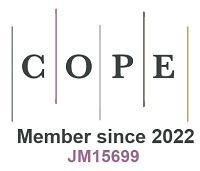REFERENCES
1. Zia KM, Noreen A, Zuber M, Tabasum S, Mujahid M. Recent developments and future prospects on bio-based polyesters derived from renewable resources: a review. Int J Biol Macromol. 2016;82:1028-40.
2. Ilkaeva M, Krivtsov I, García-López EI, et al. Selective photocatalytic oxidation of 5-hydroxymethylfurfural to 2,5-furandicarboxaldehyde by polymeric carbon nitride-hydrogen peroxide adduct. J Catal. 2018;359:212-22.
3. Kanetaka Y, Yamazaki S, Kimura K. Preparation of poly(ether ketone)s derived from 2,5-furandicarboxylic acid by polymerization in ionic liquid. Macromolecules. 2016;49:1252-8.
4. Payne J, Jones MD. The chemical recycling of polyesters for a circular plastics economy: challenges and emerging opportunities. ChemSusChem. 2021;14:4041-70.
5. Parida D, Aerts A, Vanbroekhoven K, et al. Monomer recycling of polyethylene terephthalate, polycarbonate and polyethers: scalable processes to achieve high carbon circularity. Prog Polym Sci. 2024;149:101783.
6. Chen G, van Straalen NM, Roelofs D. The ecotoxicogenomic assessment of soil toxicity associated with the production chain of
7. Eerhart AJJE, Faaij APC, Patel MK. Replacing fossil based PET with biobased PEF; process analysis, energy and GHG balance. Energy Environ Sci. 2012;5:6407.
8. Trapasso G, Annatelli M, Dalla Torre D, Aricò F. Synthesis of 2,5-furandicarboxylic acid dimethyl ester from galactaric acid via dimethyl carbonate chemistry. Green Chem. 2022;24:2766-71.
9. Zhao D, Delbecq F, Len C. One-pot FDCA diester synthesis from mucic acid and their solvent-free regioselective polytransesterification for production of glycerol-based furanic polyesters. Molecules. 2019;24:1030.
10. Liao YT, Nguyen VC, Ishiguro N, Young AP, Tsung CK, Wu KCW. Engineering a homogeneous alloy-oxide interface derived from metal-organic frameworks for selective oxidation of 5-hydroxymethylfurfural to 2,5-furandicarboxylic acid. Appl Catal B Environ. 2020;270:118805.
11. Bonincontro D, Lolli A, Villa A, et al. AuPd-nNiO as an effective catalyst for the base-free oxidation of HMF under mild reaction conditions. Green Chem. 2019;21:4090-9.
12. Liao X, Hou J, Wang Y, et al. An active, selective, and stable manganese oxide-supported atomic Pd catalyst for aerobic oxidation of 5-hydroxymethylfurfural. Green Chem. 2019;21:4194-203.
13. Liguori F, Barbaro P, Calisi N. Continuous-flow oxidation of HMF to FDCA by resin-supported platinum catalysts in neat water. ChemSusChem. 2019;12:2558-63.
14. Yang C, Li X, Zhang Z, et al. High efficient catalytic oxidation of 5-hydroxymethylfurfural into 2,5-furandicarboxylic acid under benign conditions with nitrogen-doped graphene encapsulated Cu nanoparticles. J Energy Chem. 2020;50:96-105.
15. Zhang S, Sun X, Zheng Z, Zhang L. Nanoscale center-hollowed hexagon MnCo2O4 spinel catalyzed aerobic oxidation of
16. Su T, Zhao D, Wang Y, Lü H, Varma RS, Len C. Innovative protocols in the catalytic oxidation of 5-hydroxymethylfurfural. ChemSusChem. 2021;14:266-80.
17. Dai K, Zhang N, Zhang L, Yin L, Zhao Y, Zhang B. Self-supported Co/CoO anchored on N-doped carbon composite as bifunctional electrocatalyst for efficient overall water splitting. Chem Eng J. 2021;414:128804.
18. Yi C, Huo J, Liu Z. Co single atoms and CoO clusters over nitrogen-doped hollow carbon spheres for synergistic oxidation of aromatic alkanes. Chem Eng J. 2023;467:143541.
19. Tan Y, Zhu W, Zhang Z, et al. Electronic tuning of confined sub-nanometer cobalt oxide clusters boosting oxygen catalysis and rechargeable Zn-air batteries. Nano Energy. 2021;83:105813.
20. Xiang G, Zhang L, Chen J, Zhang B, Liu Z. A binary carbon@silica@carbon hydrophobic nanoreactor for highly efficient selective oxidation of aromatic alkanes. Nanoscale. 2021;13:18140-7.
21. Wang M, Li M, Zhao Y, et al. Construction of N-doped carbon frames anchored with Co single atoms and Co nanoparticles as robust electrocatalyst for hydrogen evolution in the entire pH range. J Energy Chem. 2022;67:147-56.
22. Sa YJ, Park SO, Jung GY, et al. Heterogeneous Co-N/C electrocatalysts with controlled cobalt site densities for the hydrogen evolution reaction: structure-activity correlations and kinetic insights. ACS Catal. 2019;9:83-97.
23. Yi C, Zhang L, Xiang G, Liu Z. Size effect of Co-N-C-functionalized mesoporous silica hollow nanoreactors on the catalytic performance for the selective oxidation of ethylbenzene. New J Chem. 2022;46:15102-9.
24. Yi C, Zhang L, Xiang G, Chen X, Cheng N, Liu Z. N-rich porous carbon catalysts with huge surface areas from bean curd activated by K2CO3. New J Chem. 2021;45:16469-76.
25. Bi F, Feng X, Zhou Z, et al. Mn-based catalysts derived from the non-thermal treatment of Mn-MIL-100 to enhance its water-resistance for toluene oxidation: Mechanism study. Chem Eng J. 2024;485:149776.
26. Bi F, Wei J, Gao B, et al. New insight into the antagonism mechanism between binary VOCs during their degradation over Pd/ZrO2 catalysts. ACS EST Eng. 2024;4:1346-55.
27. Chen C, Wang ZQ, Gong YY, et al. Cobalt embedded in nitrogen-doped porous carbon as a robust heterogeneous catalyst for the atom-economic alcohol dehydrogenation to carboxylic acids. Carbon. 2021;174:284-94.
28. Chen X, Cheng XB, Liu Z. High sulfur-doped hard carbon anode from polystyrene with enhanced capacity and stability for potassium-ion storage. J Energy Chem. 2022;68:688-98.
29. Xiang G, Zhang L, Yi C, Liu Z. One-pot pyrolysis method to fabricate Co/N co-doped hollow mesoporous spheres with carbon/silica binary shells for selective oxidation of arylalkanes. Appl Surf Sci. 2022;577:151829.
30. Zhang L, Jie S, Cheng N, Liu Z. Solvent-free melting-assisted pyrolysis strategy applied on the Co/N codoped porous carbon catalyst. ACS Sustainable Chem Eng. 2019;7:19474-82.
31. Zhang L, Jie S, Liu Z. Bicontinuous mesoporous Co, N co-doped carbon catalysts with high catalytic performance for ethylbenzene oxidation. New J Chem. 2019;43:7275-81.
32. Son HJ, Kim MJ, Ahn SH. Monolithic Co-N-C membrane integrating Co atoms and clusters as a self-supporting multi-functional electrode for solid-state zinc-air batteries and self-powered water splitting. Chem Eng J. 2021;414:128739.
33. Yang Q, Choi H, Al-Abed SR, Dionysiou DD. Iron-cobalt mixed oxide nanocatalysts: heterogeneous peroxymonosulfate activation, cobalt leaching, and ferromagnetic properties for environmental applications. Appl Catal B Environ. 2009;88:462-9.
34. Liu S, Wang H, Wang S, et al. Engineering morphology and Ni substitution of NixCo3-xO4 spinel oxides to promote catalytic combustion of ethane: elucidating the influence of oxygen defects. ACS Catal. 2023;13:4683-99.
35. Zhang X, Xu X, Yao S, et al. Boosting electrocatalytic activity of single atom catalysts supported on nitrogen-doped carbon through N coordination environment engineering. Small. 2022;18:e2105329.
36. Liu Y, Gan T, He Q, Zhang H, He X, Ji H. Catalytic oxidation of 5-hydroxymethylfurfural to 2,5-diformylfuran over atomically dispersed ruthenium catalysts. Ind Eng Chem Res. 2020;59:4333-7.
37. Ke Q, Jin Y, Ruan F, et al. Boosting the activity of catalytic oxidation of 5-hydroxymethylfurfural to 2,5-diformylfuran over nitrogen-doped manganese oxide catalysts. Green Chem. 2019;21:4313-8.
38. Jing T, Yang S, Feng Y, Li T, Zuo Y, Rao D. Selective and effective oxidation of 5-hydroxymethylfurfural by tuning the intermediates adsorption on Co-Cu-CNx. Nano Res. 2023;16:6670-8.
39. Pal P, Saravanamurugan S. Enhanced basicity of MnOx-supported Ru for the selective oxidation of 5-hydroxymethylfurfural to
40. Huang X, Song J, Hua M, et al. Enhancing the electrocatalytic activity of CoO for the oxidation of 5-hydroxymethylfurfural by introducing oxygen vacancies. Green Chem. 2020;22:843-9.
41. Yang W, Yu H, Wang B, et al. Leveraging Pt/Ce1-xLaxO2-δ to elucidate interfacial oxygen vacancy active sites for aerobic oxidation of 5-hydroxymethylfurfural. ACS Appl Mater Interfaces. 2022;14:37667-80.
42. Du J, Fang H, Qu H, Zhang J, Duan X, Yuan Y. Fabrication of supported Au-CuOx nanohybrids by reduction-oxidation strategy for efficient oxidative esterification of 5-hydroxymethyl-2-furfural into dimethyl furan-2,5-dicarboxylate. Appl Catal A General. 2018;567:80-9.
43. Gupta SSR, Vinu A, Kantam ML. Copper-catalyzed oxidative methyl-esterification of 5-hydroxymethylfurfural using TBHP as an oxidizing and methylating reagent: a new approach for the synthesis of furan-2,5-dimethylcarboxylate. J Catal. 2020;389:259-69.
44. Li Q, Wang H, Tian Z, et al. Selective oxidation of 5-hydroxymethylfurfural to 2,5-furandicarboxylic acid over Au/CeO2 catalysts: the morphology effect of CeO2. Catal Sci Technol. 2019;9:1570-80.
45. García-Zaragoza A, Cerezo-Navarrete C, Oña-Burgos P, Martínez-Prieto LM. Boosting the catalytic performance of graphene-supported Pt nanoparticles via decorating with -SnBun: an efficient approach for aqueous hydrogenation of biomass-derived compounds. Nanoscale. 2023;15:12319-32.
46. Cheng F, Guo D, Lai J, et al. Efficient base-free oxidation of 5-hydroxymethylfurfural to 2,5-furandicarboxylic acid over copper-doped manganese oxide nanorods with tert-butanol as solvent. Front Chem Sci Eng. 2021;15:960-8.








